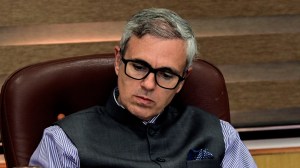Death of a prisoner
Heinous as his alleged crime was,Ram Singhs death should shame the state entrusted with his protection
Heinous as his alleged crime was,Ram Singhs death should shame the state entrusted with his protection
Ram Singh,main accused in the Delhi gangrape of December 16 that galvanised a nation,has allegedly killed himself in prison. He was awaiting trial in Delhis high-security Tihar Jail. He was already on the jails suicide watch. Three others shared his cell. The details are unclear. Did he hang himself with his own clothes,or with a rope? Did he commit suicide to express penitence,or was he victimised by other inmates,or pressured by jail authorities? While the facts are yet to emerge,Ram Singhs death has cast a shadow on the workings of Tihar Jail,and provoked larger questions about life in Indian jails.
The death of biscuit businessman Rajan Pillai in 1995,while in judicial custody in Tihar,had focused attention on conditions in the jail and the lack of medical facilities. Since then,a new and improved Tihar has been considered one of the exceptions in Indias overcrowded,and often violent,prison system. It has music lessons and performances,carpentry and baking,cricket matches and film festivals; its inmates are given a chance to make and market consumer products and provided access to recruitment services; it has been experimenting with semi-open barracks. But in too many ways,the colonial-era Prisons Act,1894,is still the foundation of prison administration in India.
Indias incarceration rates may be low compared to other parts of the world,but the facilities are enormously strained and more than half of those in jail have not been convicted yet,according to the National Crimes Record Bureau. Tihar itself has roughly 12,000 inmates,double its sanctioned capacity. When unmanageable numbers of people are forcibly enclosed together,prisoner-on-prisoner violence is all too common,with staff failing to keep watch or even directly disciplining prisoners. The majority of these crimes go unreported because they occur behind prison bars,sealed away from the world. Many are indifferent to this brutality,viewing it as fitting informal punishment for despised criminals. The crime and fear in prisons,though,only entrenches a cycle of violence,and comes with great social costs. Prisoners are also far likelier than other citizens to commit suicide in despair,and jail authorities are responsible for preventing these deaths. If prisons are to be considered rational institutions,rather than horrible holding pens,then prisoners rights should be of utmost importance,and their protection the states strongly held commitment.







- 01
- 02
- 03
- 04
- 05
























